Much has been made of online ‘buy British’ sections, but farmers aren’t impressed. A consultation is looking to make claims clearer
With stores full of union flags and a flurry of supermarkets introducing so-called ‘buy British’ sections on their websites, consumers might be forgiven for thinking that all was rosy in the British market garden.
Yet the past three months have seen three British suppliers collapse, including UK Salads at the start of March. All have bemoaned poor retailer returns as a contributing factor, while farmers across the country have been in an increasingly militant mood since the turn of the year, with their treatment by the major supermarkets a key driver in a series of protests.
The likes of Sainsbury’s, Aldi, Ocado, Morrisons, Co-op and Waitrose have all stepped up their flag-waving with British website sections, following a push by Conservative MP Dr Luke Evans last summer, backed by government, for retailers to better signpost British-sourced produce and give consumers “greater power in their choices”.
But a grower source told The Grocer in the wake of their announcements that the retailer moves were a mere “gimmick”, warning that if they wanted continued supply of British produce, they needed to pay more.
And in March, a new Defra consultation brought into focus the confusion over what British signposting even means.
It is exploring mandatory country of origin and method of production labelling on some key fresh foods. “For example, if imported pork is cured into bacon in the UK and features a union jack, exploring ways to make it more obvious to consumers that the pig was reared abroad – such as increasing the size of the country of origin text, or placing it front of pack.”
Farming minister Mark Spencer heralded the proposals as an opportunity to ensure “food labels are transparent and easy to understand”, while also helping shoppers better find British produce over “lower-quality imports”.
So how do the mults classify British produce? How do their sourcing commitments stack up, and what could the consultation change?
Consumers, seemingly, are in favour of greater clarity when it comes to signposting British produce. A survey of 2,000 adults by the NFU last summer revealed 87% supported increasing self-sufficiency in UK food production, up from 80% in 2022.
And Sainsbury’s CEO Simon Roberts – on announcing the introduction of the retailer’s Buy-British section in February – said many of the retailer’s shoppers “want to support British suppliers and make more conscious choices when doing their food shop”.
However, a poll published by YouGov in mid-March suggested a slightly more nuanced picture, revealing the ‘Britishness’ of a product ranked seventh highest out of 21 metrics among consumers (at 19%), and still tracked behind factors such as freshness (46%), sugar levels (34%) and fat content (29%). That figure rose to 31% among consumers over 55 years, but fell to only 11% of 18-24-year-olds.
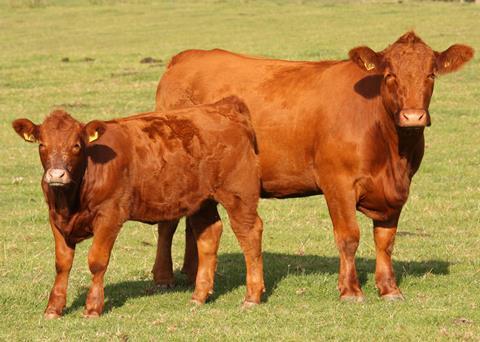
Supermarket pledges
Nonetheless, most major supermarkets do make great pains to play up their local sourcing credentials. But despite widespread pledges to back British produce, there is no clear, industry benchmark on what constitutes a British sourcing commitment, what needs to be sourced from the UK to meet such a commitment and where there is more room for interpretation.
To illustrate this, The Grocer asked major supermarkets how they define British produce, including whether it could include products processed in the UK using foreign ingredients – such as bacon from foreign pork.
Only Morrisons, Waitrose, Co-op and Ocado explicitly told us something processed in the UK using ingredients from overseas would not count as British.
Most said they sourced 100% British red meat (though some added caveats relating to New Zealand lamb and Irish beef), while shell eggs, milk and fresh produce (when seasonal) were all sourced as a minimum from Britain (see box, below).
Only M&S specifically stated examples of metrics around these commitments, with the retailer saying it went beyond the above commitments to source only the highest welfare British meat, while also sourcing only British seafood species like salmon.
But beyond M&S, there is a wide variation in how the retailers define British food and how much of their supply comes from British sources. And as the table below shows, the huge inconsistencies in claims over provenance makes it difficult to gauge the relative strengths and weaknesses of each retailer commitment.
Most were keen to highlight their commitment to UK sourcing via “longstanding relationships” with British suppliers – with the numbers they produced ranging from 15,000 for Sainsbury’s to 124 across dairy, produce and meat at Ocado. However, Ocado did also stress it had access to M&S’s British supply chain of more than 8,000 farms.
But the definition of what constituted a current supplier was also unclear from the responses of the supermarkets.
Different food categories were also impacted differently by labelling challenges, as while it is easy for retailers in fresh produce, dairy and meat to track the complete supply chain, in products with composite ingredients such as pies, ready meals or sandwiches, the origin of ingredients is much less clear.
For example, Waitrose identifies a product as British when the primary ingredient, or an ingredient characterising the product, is produced in Britain – such as British chicken in a chicken pie.
What the biggest retailers say: |
|||||||||||
| Supermarket | Aldi* | Asda** | Co-op | Iceland | Lidl | M&S | Morrisons | Ocado | Sainsbury’s*** | Tesco | Waitrose |
| Number of British suppliers | 5,000 British suppliers | No comment | No comment | 250 British suppliers | 650 British suppliers | 8,000 Select farms | 2,500 British farmers and growers | 124 British suppliers (plus M&S farms) | 15,000 British suppliers | No comment | No comment |
|---|---|---|---|---|---|---|---|---|---|---|---|
| Do they have a Buy British section? | Yes | Yes | Yes | No | No | Through Ocado | Yes | Yes | Yes | No | Yes |
| Beef | All core range is 100% British | No comment | 100% fresh and frozen | No comment | 100% British | 100% British | 100% British | 100% British | 100% British or Irish | 100% British or Irish | 100% British or Irish |
| Lamb | No comment | No comment | 100% fresh and frozen | No comment | No comment | 100% British | 100% British | 33% British | Taste the Difference, SO Organic and Northern Highland lamb, is 100% British | Finest lamb is 100% British | 100% British or Irish |
| Pork | Core range is 100% British | No comment | 100% fresh and frozen | No comment | 100% British | 100% British | 100% British | 88% British | All core range is 100% British | 100% finest pork cuts and all sausages | 100% British or Irish |
| Chicken | Core range is 100% British | 100% fresh chicken | 100% fresh and frozen | No comment | 100% British | 100% British | 100% British | 100% British | 100% British | 100% fresh chicken | 100% British or Irish |
| Salmon | No comment | No comment | No comment | No comment | No comment | 100% British | Available in The Best range | 64% of all fish is British | 100% British | No comment | 100% of farmed |
| Eggs | Core range is 100% British | 100% British | 100% British free range | No comment | 100% British | 100% British | 100% British | 58% British | 100% British | 100% British | 100% British |
| Butter | No comment | 100% British | No comment | No comment | 100% British | No comment | 100% British | 87% British | by Sainsbury’s and SO Organic is 100% British | 100% British | 100% British |
| Milk | Core range is 100% British | 100% British | 100% British | No comment | 100% British | 100% British | 100% British | 100% British | 100% British | 100% British | 100% British |
| Cream | No comment | 100% British | 100% British | No comment | 100% British | No comment | 100% British | 87% British | 100% British | No comment | 100% British |
| Fruit | No comment | Varied depending on fruit and season | 100% British strawberries/ 60% fresh produce | No comment | No comment | No comment | 100% when in season | 54% British | Varied depending on fruit and season | No comment | 50% British |
| Veg | No comment | Varied depending on vegetable and season | 100% British mushrooms / 60% fresh produce | No comment | No comment | No comment | 100% when in season | 75% British | Varied depending on vegetable and season | No comment | 80% British |
And unlike many of its competitors, Waitrose says it does not label products as ‘made’, ‘produced’, ‘packed’ or ‘processed’ in the UK, due to “concerns these labels can be misleading to customers when characterising ingredients that are not of UK origin”.
Elsewhere, The Co-op says it has a strict policy around the use of ‘British’ on pack, which means own primary products of animal origin (meat and poultry) must be born, reared, slaughtered and packed in GB.
For composite products such as sandwiches, ready meals and pizza its policy is to indicate the British provenance of the key ingredients where applicable (such as British pork in a ham sandwich), but in this instance it says it would not name the whole product as ‘British’.
For others, the situation is decidedly less clear cut, but most responses to The Grocer focused on how retailers kept labelling “as clear as possible” to ensure customers could know whether the whole item was British or just an element of it.

Buy-British buttons
As for the ‘buy British’ website sections, Sainsbury’s page includes over 450 British-sourced products, while Ocado, which claims to have the largest range, includes 800. Aldi and Morrisons, however, don’t give a fixed number of SKUs.
And the introduction of these relatively new sections – despite their laudable aims to better signpost local food – has not impressed everyone. Lee Stiles, secretary of the Lea Valley Growers Association, says many growers see them as a “distraction”.
“Most supermarkets will have less and less British produce on display this year as growers who exit the industry are simply not replaced,” he says.
British Berry Growers chairman Nick Marston adds “the real underlying issue is the race to the bottom on own label pricing and thus returns to growers created by what I think is becoming a broken grocery trade model”.
This is leaving whole sectors with no economic sustainability, he adds. “Whilst in theory consumer pull is a good way to ensure appropriate returns from the market, I don’t think ’buy-British’ buttons, or ’best of British’ aisles are going to address the main issue, which is that fresh produce is currently underpriced, UK growers are financially unsustainable, and the UK market is unattractive to overseas producers.”
Ged Futter, director of The Retail Mind, agrees, adding the latest retailer moves do not go far enough in getting more British produce in consumer baskets because online sales only account for 11% of all sales in the major mults. In stores, it has become usual to see British flags, but “that doesn’t mean they actually have British produce”, he argues.
In Futter’s view, retailers need to do more in store to call out seasonality and highlight when British product is available, as with current ranging strategies “the customer will only know if they check the label”.
He points to events like Easter and Mother’s Day, which have a lot of instore activity and promotion, unlike British produce which “has to fit into whatever the event is” rather than retailers making a “big deal” about seasonality itself.
“If you don’t make it important, the customer won’t think it is important,” he says.
Labelling consultation
So, given this huge variation from retailer to retailer and the related lack of transparency, it shouldn’t come as a surprise government is now looking at mandatory country of origin and method of production labelling to try and clear things up for shoppers.
Farming minister Mark Spencer promises Defra’s consultation will “make labelling showing where and how food is produced fairer and easier to understand”.
Currently there is insufficient statutory guidance on what can and can’t be used on pack – apart from regulations on the method of production of shell eggs.
“This has led to an array of different voluntary terms which are inconsistently applied,” says Defra’s consultation document.
“This risks consumers being unable to clearly compare products and make informed purchasing decisions,” it adds.
“This lack of clarity, consistency and transparency could lead to unfairness for both consumers, who may unknowingly be purchasing products that don’t align with their values, and for farmers who are disadvantaged if their higher production standards are not clear to consumers.”
The probe will look at adopting increased visibility of origin labelling, plus mandatory origin labelling for certain foods in the out-of-home sector and greater control of the use of national flags.
It will also look at introducing a tier system “underpinning standards that are primarily based on method of production, differentiating between products that fall below, meet and exceed relevant baseline UK welfare regulations” – similar to a chicken labelling scheme Lidl has operated since 2021.
This would apply to all unprocessed pork, chicken and all egg products, and certain pre-packed and loose minimally processed products with pork, chicken or egg, Defra says.
The potential for greater clarity was welcomed by Waitrose boss James Bailey this week as “better information boosts demand for higher standards”.
Compassion in World Farming, meanwhile – which has been campaigning for similar reforms since the middle of the last decade – says it is “encouraged” by the consultation and its bid to “increase transparency around country of origin and method of production labelling, so that consumers can make more informed choices when purchasing meat”.
The RSPCA is also in favour, but say any new rules should also be extended “to all animal products in the future”.
“Labels on imported products are especially important at a time when free trade agreements that don’t prioritise animal welfare risk lower welfare imports flooding our supermarket shelves,” says its head of public affairs David Bowles.
But the NFU has been more circumspect. “Labelling on its own is not the answer to safeguarding our own high standards from imports produced under conditions that would be illegal in the UK,” says deputy president David Exwood. “That is why one of our election manifesto asks is for the next government to enshrine core environmental and animal welfare standards in law for all agri-food imports.”
The consultation will run until 7 May.
Notes to the table
Aldi*
- Last year, more than three quarters of our sales came from products sourced from British suppliers, and we are committed to supporting Britain
- We are the market leader of British fresh fruit and vegetables and all our core range of fresh everyday beef, pork, poultry, milk and eggs will continue to be British Red Tractor, RSPCA Assured or Lion Egg approved
- We were able to invest an additional £1.3 billion with British suppliers in 2023
Asda**
- All Asda’ own brand produce is sourced by IPL, a British company
Sainsbury’s***
- There are times where we will source lamb from New Zealand as well, so that we can continue to meet customer demand while offering the best possible value
- All retailers source 100% fresh British chicken but we are the only retailer of our size to deliver higher welfare chicken on this scale. We have moved all our core chicken to Moy Park and as part of that change, the stocking density of our core chicken will be above 30kg/m2 – giving our birds 20% more space the first UK supermarket to offer 100% ASC certified Scottish salmon
- We source a range of vegetables exclusively from Britain, including our Taste the Difference carrots, mushrooms, parsnips and potatoes, to name a few







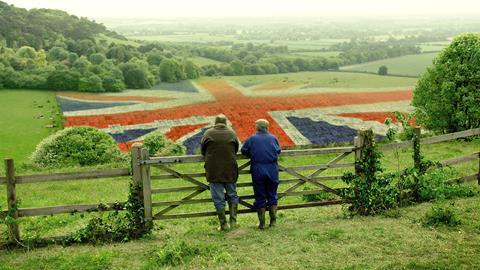

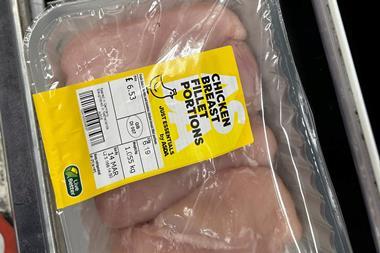
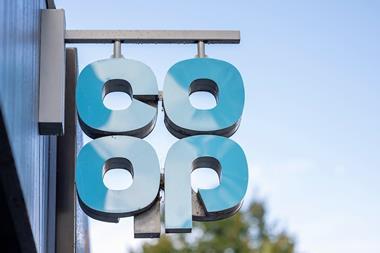

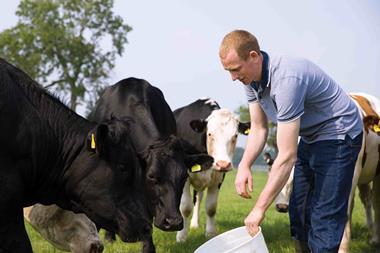
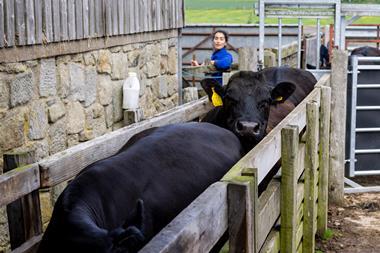






No comments yet